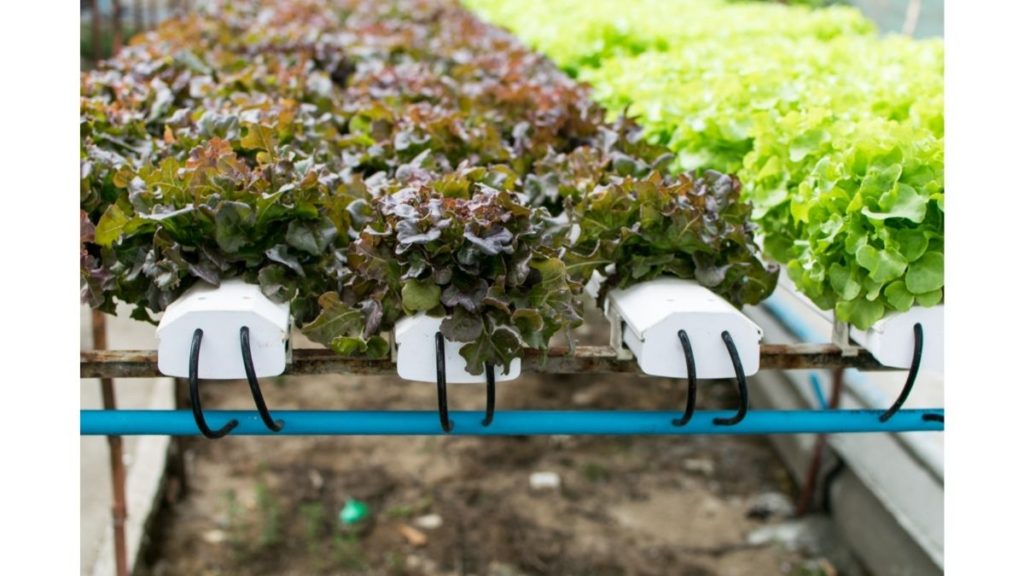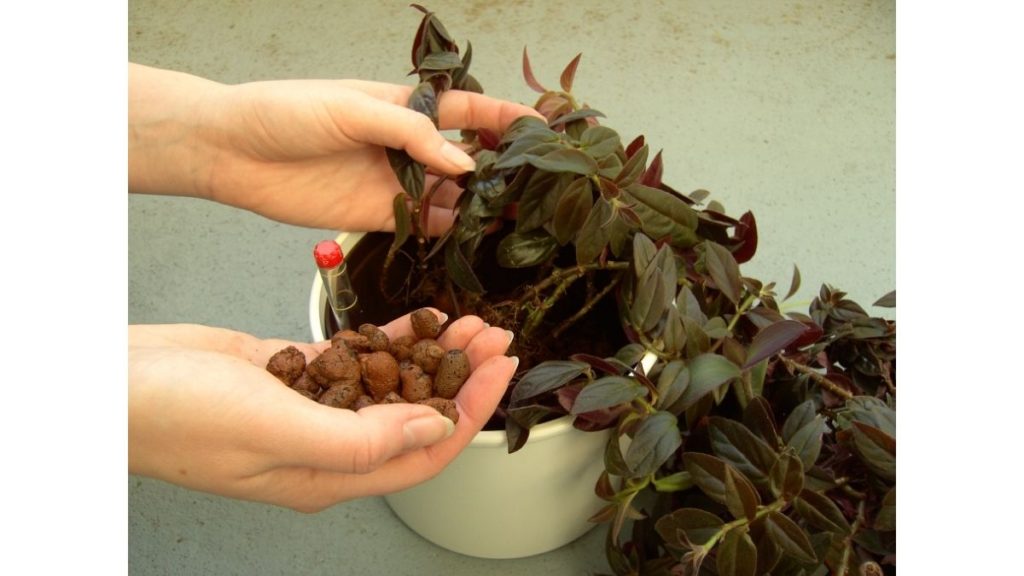Hydroponics is a relatively new farming technique that compels us to reconsider all we think about farming. It offers a paradigm shift, suggesting that plants do not require soil to survive, but only a substrate capable of delivering the vital nutrients and water they require to develop. These hydroponic systems have a number of advantages and could be the way mankind feeds itself in the coming generations.
If you want to start a hydroponics project, you’ll need to learn the basics of how to grow plants in a hydroponics system. On this blog, you’ll learn about the fundamentals of hydroponics as well as the benefits and drawbacks of using one. Let’s get started.
Hydroponic Farming
Hydroponics is a type of horticulture that involves using nutrient solutions in an aqueous solvent to grow plants without soil. In hydroponics we either suspend the plants directly in the aqueous solution or in a soil-free medium such as coconut coir, rock wool, LECA, vermiculite, or perlite. The nutrient solution flows past the plant roots in either an active system or a passive system.
- Active systems employ pumps for the circulation and aeration of nutrient solutions to deliver the nutrients in the plant’s root zone.
- Passive systems don’t have any pumps or moving parts. The nutrient solutions reach the roots through flooding, gravity, or capillary action.
Hydroponic systems use nutrients like fish waste, duck manure, chemical fertilisers, and artificial nutrient solutions. Tomatoes, peppers, cucumbers, strawberries, lettuces, and other plants are commercially grown using hydroponics on inert material.
Plants cultivated in a hydroponics system often require additional lighting because natural light is limited indoors. Hanging lights above the plants and adjusting their brightness replicates the natural sunshine and darkness cycles that plants require to thrive.
Next, let’s have a look at the various hydroponic techniques.
Techniques used in Hydroponics
Let me show you some of the commonly used techniques in hydroponics.
Static Solution Culture
Static Solution Culture employs nutrient solution containers such as glass Mason jars, pots, buckets, tubs, or tanks to grow plants. The solution is normally aerated lightly, but it can also be left unaerated. If there is no aeration, we keep the solution level low enough so that roots are above the solution to acquire sufficient oxygen. To prevent algae growth, we cover clear containers with aluminium foil, butcher paper, black plastic, or other materials that block light.
The nutrient solution requires regular replacement, such as once a week, or when the concentration falls below a specified threshold. When the solution reaches a particular amount of nutrient depletion, we introduce either water or a new nutrient solution.
In case you are planning to build a hydroponics system in your home, grab some food containers or glass canning jars. Fill the jar to the appropriate level using a nutrient solution. Next, provide aeration using an aquarium pump, aquarium airline tubing, and aquarium valves. Your hydroponic system is good to go now.
Continuous Flow Solution Culture
In continuous-flow solution culture, the nutrient solution constantly flows past the roots. Sampling and adjustments in temperature, pH, and nutrient concentrations are done in a large storage tank that has the potential to serve thousands of plants. We continuously circulate this solution through the base of the roots. Since we perform the adjustments in a large volume of solution at once, it is much easier to automate than the static solution culture.
A popular variation is the nutrient film technique or NFT. In this technique, a very shallow stream of water containing all the nutrients for plant growth recirculates in a thin layer past a bare root mat of plants. We place the plants in a watertight channel, with its upper surface exposed to air. As a result, an abundant supply of oxygen is provided to the roots of the plants
Aeroponics
Aeroponics involves growing plants with their roots hanging in a deep air or growth chamber, while we wet the roots with a thin mist of atomized nutrients regularly. If you wish to dig deeper into this topic, the best place to start would be Aeroponics – Process, Types, Advantages – Full Details
Common equipment used in Hydroponics
Managing nutrient concentrations, oxygen saturation, and pH values within acceptable ranges is essential for a successful hydroponic system. Common tools used to manage hydroponic solutions include:
- Electrical conductivity meter: This instrument measures the nutrientconcentration in ppm by measuring how well a solution is conducting an electric current.
- pH meter: This instrument determines the concentration of hydrogen ions in solution using electric current.
- Oxygen electrode: This electrochemical sensor determines the oxygen concentration in solution.
- Litmus Paper Strips: Determines the pH or hydrogen ion concentration of the nutrient solution by colour-changing chemical reaction.
- Graduated cylinders to measure out premixed, commercial hydroponic solutions.
Substrates used in Hydroponics
The substrate provides the plant with oxygen, water, nutrients, and support. Foam, gravel, perlite, rockwool, sand, coco coir, and pumice are popular substrate options. Each substrate has its own benefits and drawbacks, and the choice depends on availability, cost, quality, and the type of hydroponic system.
Baked Clay Pellets
Baked clay pellets are inert, pH-neutral, and have no nutritional value. The clay is shaped into spherical pellets and burnt at 1,200°C (2,190°F) in rotary kilns. As a result, the clay expands and becomes porous, similar to popcorn. Because of its capacity to be cleaned and disinfected, the makers claim expanded clay to be an environmentally sustainable and re-usable growing medium.
Rice Husk
PBH (parboiled rice husk) is a byproduct of the rice industry that would otherwise go to waste. They decompose over time, allowing drainage and retaining less water than grow stones. Rice husks do not interfere with plant growth regulators.
Perlite
Perlite is a lightweight expanding glass pebble made from a superheated volcanic rock. It helps to reduce soil density in potting soil mixes. Also, perlite is comparable to vermiculite in terms of qualities and applications, but it holds more air and less water and is buoyant.
Rockwool
Rockwool is a mineral fiber derived from basaltic rock. It is the most popular hydroponic medium. It provides rapid crop turnaround and minimal risk of crop failure. The open rockwool system also limits diseases in the system.
Advantages of Hydroponics
Why has hydroponics gained a lot of popularity? Read on to find it out as I show you the advantages of hydroponics
Longer growth period
Chilly winter temperatures and shorter day lengths hamper plant growth in the winter season. Since the grower controls the temperature, light, and fertiliser supply, hydroponic systems offer the opportunity for year-round cultivation.
Higher yield and growth
Plants grown through hydroponics often grow faster and generate more yields. This is most likely due to the nutrition solution’s higher oxygen levels and the carefully controlled ambient variables. You can boost root growth and nutrient uptake by increasing a plant’s oxygen levels. Plants are less stressed in these ideal growing conditions, resulting in a more plentiful crop.
Plants can grow in any environment
Unlike traditional gardens, which require outdoor space, we can easily integrate hydroponics systems inside any home, regardless of size or location. The vertical stacking of plants permits planting a large number of plants in a small space.
Minimal water consumption
Although hydroponic systems rely on water to grow plants, they use 80 to 90% less water than plants grown in the ground. We apply a substantial amount of water to the soil to provide appropriate moisture to reach the root zone in traditional gardening. Water evaporates as it moves through the soil, and only a small portion of it reaches the roots.
In hydroponics, the water enters the roots almost instantly, with negligible evaporation. In many systems, the nutrient solution undergoes recirculation numerous times before dumping it. This increases water efficiency even more.
Disadvantages of Hydroponics
The following drawbacks should be taken into consideration before setting up a hydroponic garden. They are:
Expensive
A hydroponics system is more expensive to buy and build than a typical garden.
Demands constant monitoring
Hydroponics necessitates more monitoring and micromanagement than traditional plant cultivation. This is because all the system variables including light, temperature, and properties of the nutrient solution, such as pH and electrical conductivity, require constant supervision to create a precisely controlled growing environment. Moreover, the nutritional solution demands regular draining and refilling to avoid accumulation and clogging
Greater Chances of waterborne diseases
Since we grow plants in water in hydroponic systems, they are more prone to waterborne diseases than conventional plants. Diseases can quickly spread across the entire growing system and damage the entire collection of plants due to the constant recirculation of water throughout the system.
Shall we wrap up?
Conclusion
Hydroponic farming has proven to be a viable alternative to traditional farming methods. However,its output is more cost-effective, efficient, and consistent. As a result, hydroponic farming has a better rate of return on investment. It’s a wise option that’s gaining traction among urban and new-age farmers. It has the potential to have a long-term impact on traditional agriculture.




Comments are closed.